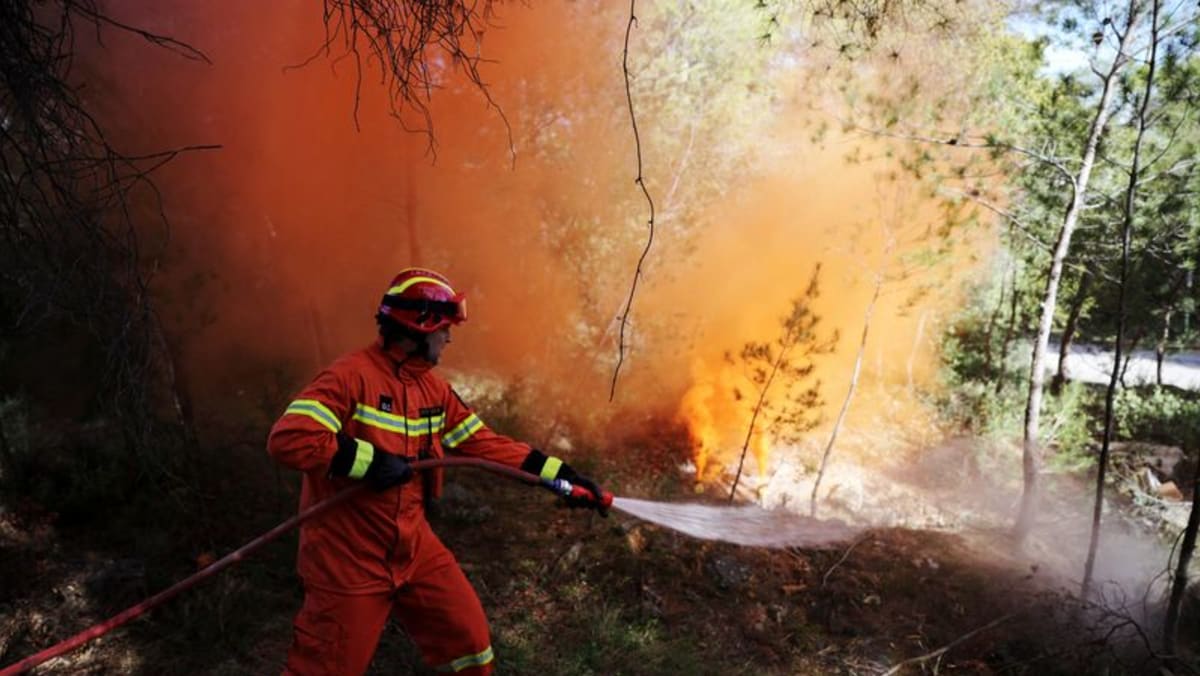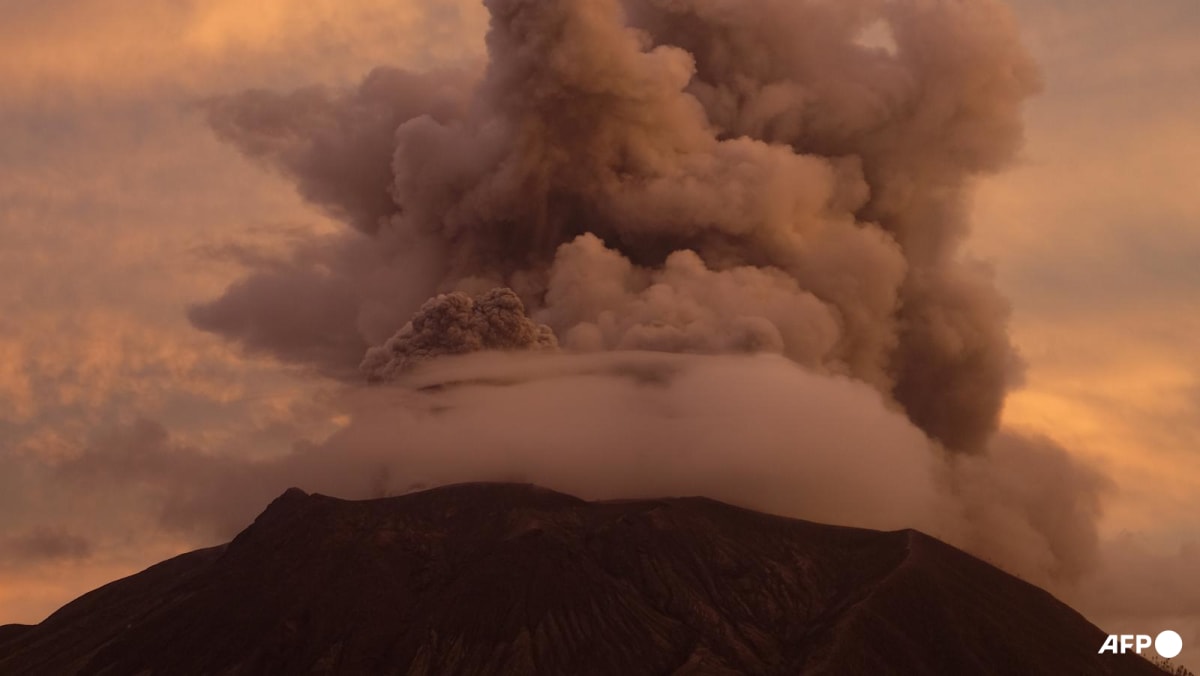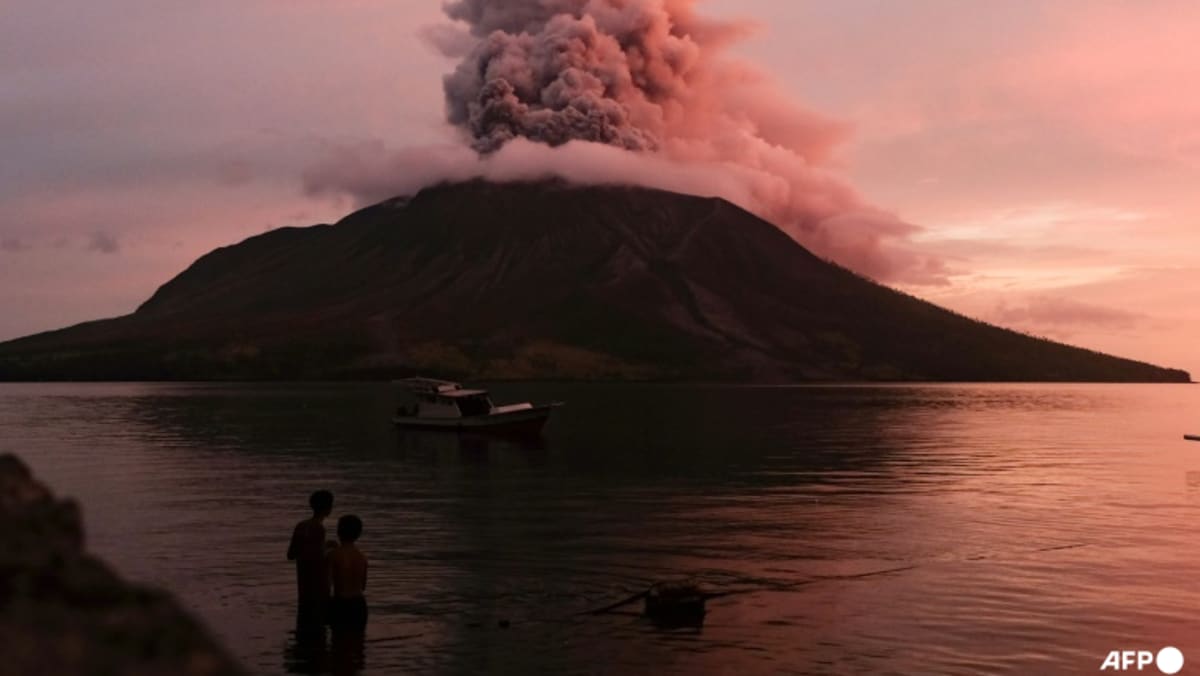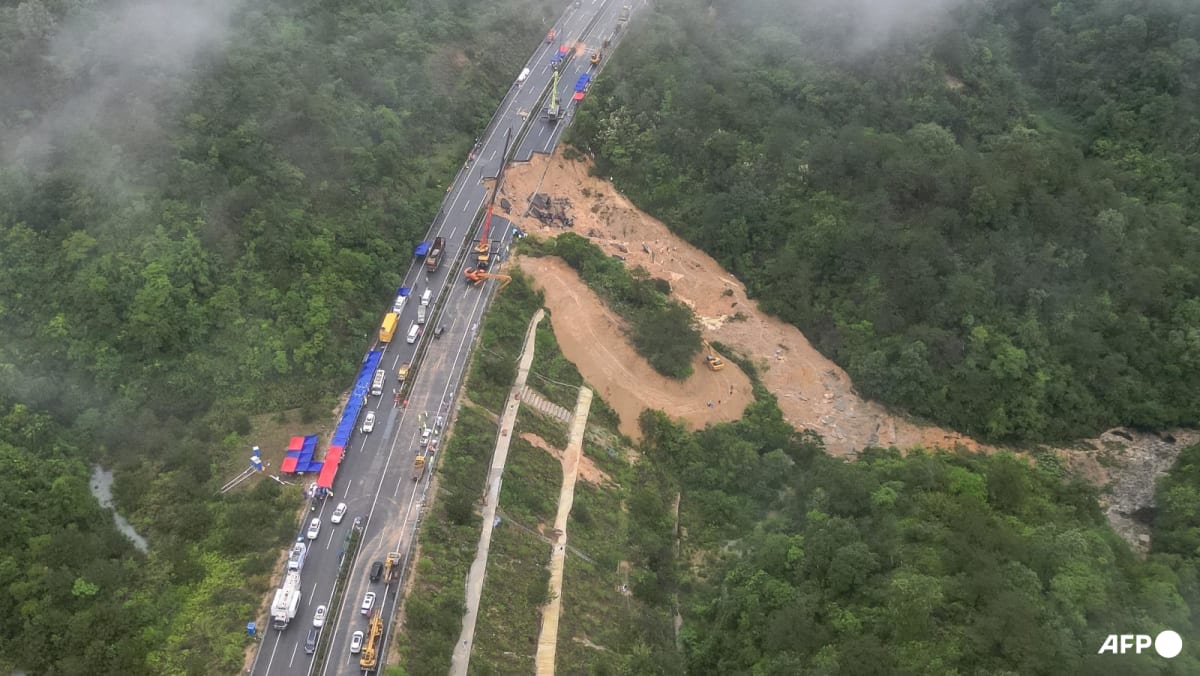THOUSANDS EVACUATED
Houses elsewhere could be seen lying empty and electricity was out in parts of the island before Friday’s eruption.
Officials said Thursday that communications had been knocked out on parts of both Ruang and Tagulandang, which is home to around 20,000 people.
Sahid Samihing, a 53-year-old Tagulandang resident, said he feared his belongings would be ruined after volcanic rocks peppered his roof.
“If it’s not covered, it will destroy the house,” the father-of-three said.
“It was terrifying. No one would not be scared. Everybody was scared. I experienced this event directly.”
More than 6,000 residents of Tagulandang had been evacuated to the other side of the island that faces away from the crater, Joikson Sagunde, an official from the Sitaro islands disaster management agency, told AFP.
There were no reports of deaths or injuries but authorities said a day earlier they hoped to evacuate 11,000 people from the exclusion zone.
Some of those affected took cover in makeshift shelters at churches and school buildings, the AFP journalist said.
The closure of a nearby international airport in Manado city, more than 100km from the crater, was also extended to Friday evening, national disaster mitigation agency (BNPB) spokesman Abdul Muhari said in a statement.
The alert level upheld the exclusion zone around the crater, as well as warnings about further eruptions and parts of the volcano collapsing into the sea that could cause a tsunami.
In 2018, the crater of Mount Anak Krakatoa between Java and Sumatra islands partly collapsed when a major eruption sent huge chunks of the volcano sliding into the ocean, triggering a tsunami that killed more than 400 people and injured thousands.
Mount Ruang’s last major eruption was in 2002, when residents also had to be evacuated.
Indonesia, a vast archipelago nation, experiences frequent seismic and volcanic activity due to its position on the Pacific “Ring of Fire”.













